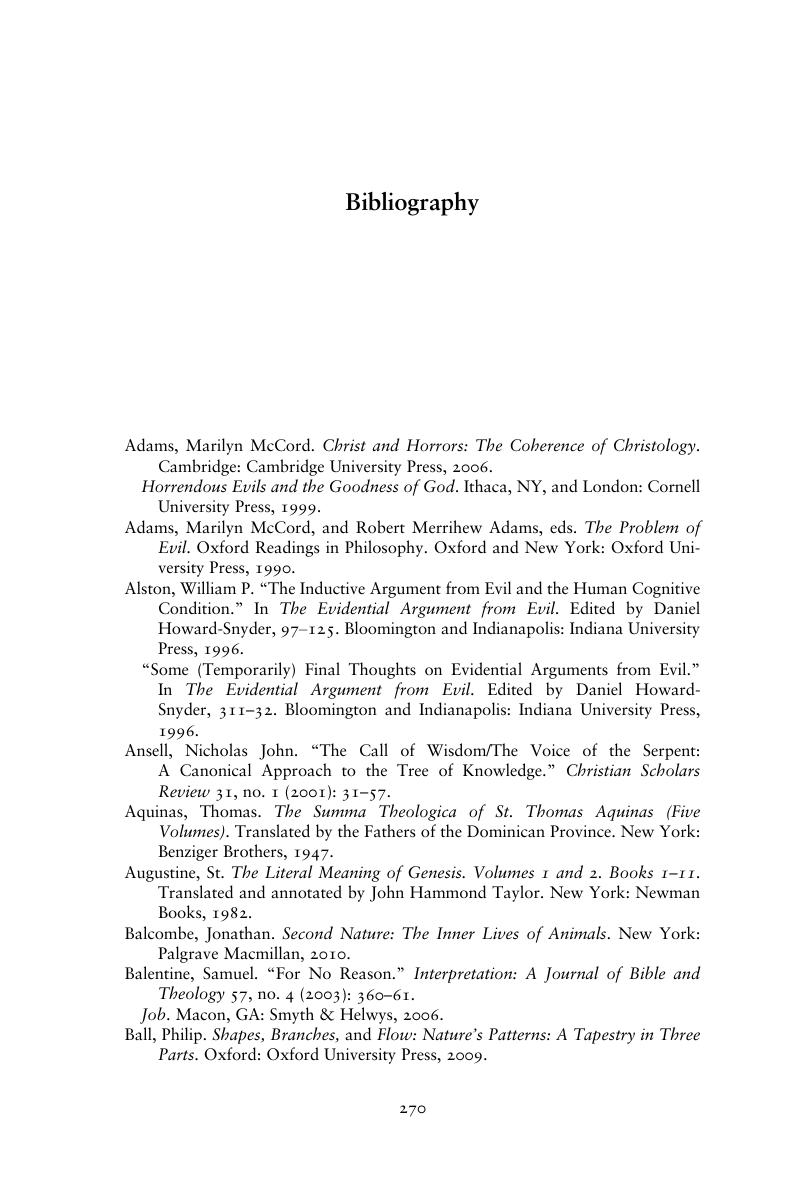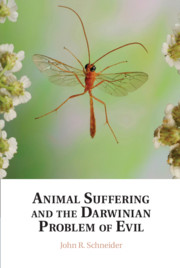Book contents
- Animal Suffering and the Darwinian Problem of Evil
- Animal Suffering and the Darwinian Problem of Evil
- Copyright page
- Dedication
- Contents
- Foreword
- Acknowledgments
- Introduction
- 1 Facing the Darwinian Problem of Evil
- 2 Darwinian Evil and Anti-Theistic Arguments
- 3 Ways around the Problem
- 4 Making a “Case for God” (a Causa Dei)
- 5 Animal Suffering and the Fall
- 6 Narrow Is the Way of World Making
- 7 God-Justifying Beauty
- 8 Suffering “For No Reason”
- 9 Darwinian Kenōsis and “Divine Selection”
- 10 Animals in Heaven
- Bibliography
- Index
- References
Bibliography
Published online by Cambridge University Press: 17 March 2020
- Animal Suffering and the Darwinian Problem of Evil
- Animal Suffering and the Darwinian Problem of Evil
- Copyright page
- Dedication
- Contents
- Foreword
- Acknowledgments
- Introduction
- 1 Facing the Darwinian Problem of Evil
- 2 Darwinian Evil and Anti-Theistic Arguments
- 3 Ways around the Problem
- 4 Making a “Case for God” (a Causa Dei)
- 5 Animal Suffering and the Fall
- 6 Narrow Is the Way of World Making
- 7 God-Justifying Beauty
- 8 Suffering “For No Reason”
- 9 Darwinian Kenōsis and “Divine Selection”
- 10 Animals in Heaven
- Bibliography
- Index
- References
Summary

- Type
- Chapter
- Information
- Animal Suffering and the Darwinian Problem of Evil , pp. 270 - 281Publisher: Cambridge University PressPrint publication year: 2020



